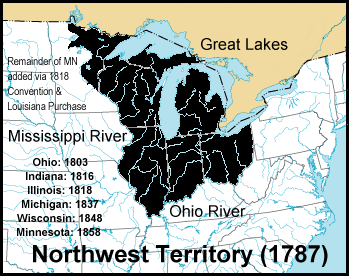| Northwest Territory's at-large congressional district | |
|---|---|
| Obsolete district | |
| Created | 1798, as a non-voting delegate was granted by Congress |
| Eliminated | 1803, as a result of statehood as Ohio |
| Years active | 1798–1803 |

In 1798, the Northwest Territory became eligible to send a non-voting delegate to the U.S. Congress. The Assembly elected this representative.
